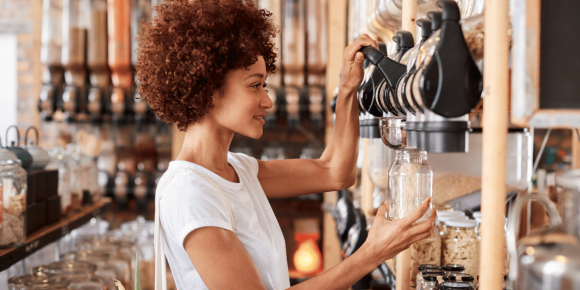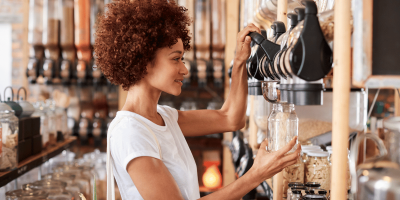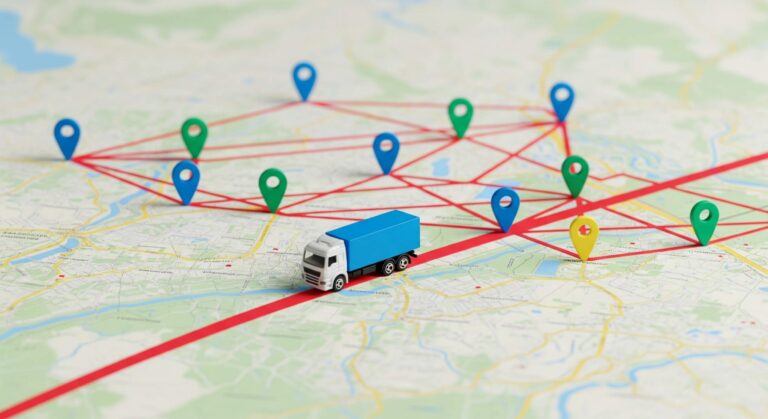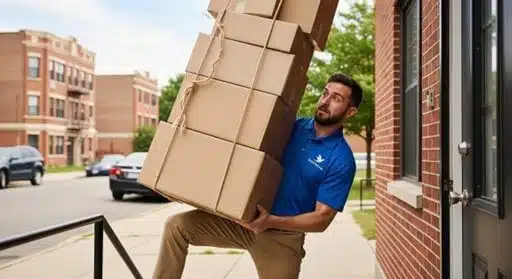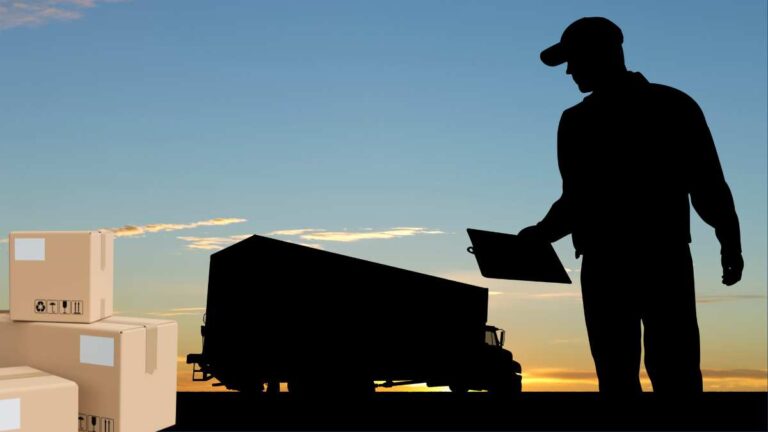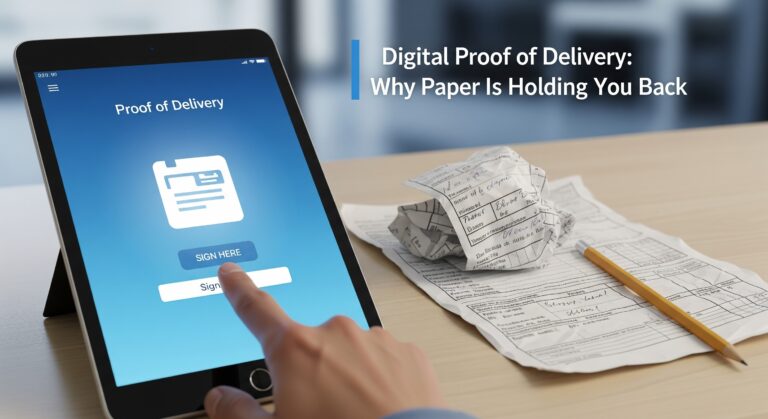Sustainable grocery shopping is turning into more than just a trend. It’s now a necessary shift in how we approach our online carts and in the food choices we make.
As more people become aware of their own personal environmental impact, shopping habits will continue to change.
This guide will walk you through the basics of sustainable grocery shopping, from understanding its importance to putting practical strategies into action.
Understanding sustainable grocery shopping
Green grocery shopping means making mindful choices as a consumer. This includes choices that will positively affect the environment now and for future generations.
Beyond that, it also involves understanding the impact of food systems on the environment and human well-being.
Sustainable grocery shopping requires a full rethink of how we select our food and involves making conscious choices about what we eat.
It’s essential to consider the environmental, social, and economic impacts of our food choices.
One way to achieve this is sustainable grocery shopping – using reusable bags, alternatives to plastic bags, sustainable storage solutions, and reducing food waste.
Reducing food waste
The first step in this journey (and the easiest) is to simply reduce food waste. This is essential to sustainable grocery shopping and can help cut greenhouse gas emissions.
According to the Wildlife Fund, reducing food waste is about more than just our own individual journey towards a greener future.
The amount of food that’s discarded every year is not only an environmental concern – it’s a humanitarian concern as well.
Approximately 6 to 8% of all human-caused greenhouse gas emissions could be reduced if we stop wasting food.
In the United States alone, the production of lost or wasted food results in more than 32.6 million cars’ worth of greenhouse gas emissions.
This is the equivalent of 42 coal-fired power plants, according to the Environmental Protection Agency (EPA).
It also uses up enough water and energy to supply 50 million homes, and takes up the agricultural land that equals California and New York combined!
Food for thought, indeed…
Here’s how you can start:
- Buy only what you need.
- Which requires shopping with a plan.
- Reduce spoilage by storing foods properly.
- Try exciting waste-free cooking techniques.
- Turn leftovers into new meals and snacks (even pet food!)
By taking these steps, you can easily eliminate food waste, streamline your personal food production routine (some call it meal prepping,) and avoid unnecessary packaging.
This reduces plastic pollution. Over the long-run, it also reduces your carbon footprint.
Sustainable grocery shopping essentials
Next, you would want to spruce your shopping experience by investing in food shopping essentials.
Reusable grocery bags for shopping are a must-have for any trip to the grocery shop. Look for reusable bags made from sustainable materials like cotton, jute, or recycled plastic.
Reusable produce bags are see-through, washable, and can be used to store a variety of items. Consider collapsible options that can support up to 65 pounds and sit upright in your trunk.
Minimizing packaging waste
You should also consider ways to minimize packaging waste at home. This step is crucial for conserving natural resources.
Opt for products with minimal or biodegradable packaging. Mason jars are excellent choices for food storage.
Mason jars can be used for prepping your breakfast and packing your lunch to storing spices, grains, olive oil and so much more.
You could also choose products in bulk to reduce packaging waste. Avoid single-use plastics like plastic bags, straws, and water bottles.
Use them as storing containers in the fridge. I’ve even used it for margarine. For spinach, carrots, and beets, I suggest leaving the bottle open. It stays fresher for longer that way.
A case against plastic containers
Research done by the International Bar Association, the world’s leading organization for legal practitioners, shed light on some of the negative environmental effects of plastic shopping bags.
It says, “If plastic bags are not properly disposed of, they can impact the environment by causing littering and stormwater drain blockages.”
In addition, “animals may also get tangled and drown in plastic bags.”
This is because animals often confuse the bags for food and consume them, therefore blocking their digestive processes.
Plastic bags are also produced from fossil fuels. These products are marketed as “disposable items” and aren’t really disposable at all.
Plastics and fossil fuels
A plastic spoon, plastic shopping bag or Styrofoam cup will be used for a duration of 5 to 20 minutes, then discarded.
But the age of the organisms and their resulting fossil fuels is typically millions of years, and sometimes exceeds 650 million years.
Fossil fuels also aren’t renewable. When it’s depleted, it’s gone for good.
And where does plastic go once it’s discarded? It goes everywhere…
It floats, it clogs, it sticks, it suffocates. Most if it ends up in a gyre called the Great Pacific Garbage Patch. As of 2019, this patch was nearly three times the size of Germany.
But what does the Great Pacific Garbage Patch – also known as the Pacific Trash Vortex and Garbage Town – have to do with sustainable shopping practices?
The concept of sustainable grocery shopping aligns with broader discussions about waste and consumption. As explored in Markus Schwarz’s analysis of “The Past Is Red,” our current consumer practices are creating an “anticipated history of ruins.”
In essence, the paper explores how our shopping habits today are shaping the world of tomorrow.
Reading this paper made me realize that sustainable grocery shopping isn’t just about reducing individual impact. It’s about reimagining our relationship with consumption and waste.
By making mindful choices at the grocery store, we are actively working against the “logics of extraction” that, as Schwarz notes, “leave their mark on planet Earth.”
Shopping locally and seasonally
Buying local and seasonal produce and other food items will help to reduce carbon emissions. It also supports sustainable agriculture and your local farmers.
As a bonus, local produce is fresher, tastes better, and is better for the environment and economy in general.
According to the University of Maryland Medical System, eating seasonally is vital for our health too.
“Fruits and vegetables that are allowed to ripen naturally and are consumed shortly after harvesting contain higher levels of vitamins, minerals and antioxidants, which protect against cancer and other serious diseases.”
It also helps the planet by reducing transport-related impacts, including the gas and oil required to power big cargo vehicles.
Remember:
- Buy local.
- Choose seasonal produce.
- Ask about production methods.
- Consider organic options to reduce exposure to synthetic chemicals.
Making sustainable choices
Sustainable choices are vital if we want to consider the environmental, social, and economic impacts of our food.
But how can you do this?
Look for groceries from eco-friendly farms and producers. Certifications like USDA Certified Organic, Fair Trade, and Regenerative Agriculture can guide your choices.
Also consider the carbon footprint of your food. You would want to opt for low-carbon options when possible.
As mentioned above, use reusable bags, produce bags, storage containers, and jars to minimize waste and support sustainable living.
Online grocery shopping options
Online grocery shopping can be both convenient and sustainable. Some online stores source products from local farmers and producers.
Many stores today also offer carbon-neutral shipping and sustainable packaging.
In fact, many consumers are demanding more options.
A recent study found that one in four shoppers are willing to switch retailers completely if the checkout process does not offer sustainable delivery options.
In addition, 27% say they would pay extra for eco-friendly options, while 67% are interested in carbon offsetting their delivery emissions.
WATCH: Do customers really care about sustainable packaging?
When you feel like your green-focuses actions are insignificant, remember that consumer demand forces companies to rethink their packaging strategies.
Zero waste grocery stores
Zero waste grocery stores are gaining popularity. These shops offer products in bulk and encourage customers to bring their own containers.
They usually have options to buy in bulk, and they encourage customers to bring their reusable containers. (Hello, mason jars!)
Beyond reducing plastic packaging, zero waste grocery stores can help conserve natural resources.
By shopping at these stores, you can significantly reduce packaging waste and help conserve resources.
Technology’s role in sustainable shopping
Technology is changing how we shop, making it easier to make sustainable choices.
Let’s look at some ways tech is helping us shop greener.
Smart apps for smarter choices
There are several apps on the market to help you shop more sustainably:
As reported by CNBC, startup company HowGood analyzes thousands of ingredients to determine “product’s greenhouse gas emissions, water usage, land usage, soil biodiversity impact, potential deforestation and concern for animal welfare.”
CEO Alexander Gillett describes it as “sustainability intelligence.”
He says “the idea here is that we have the largest database in the world on food sustainability, and companies get to use it now to start making better decisions and to be more transparent.”
Then there’s Giki Badges’ Giki Zero app, which helps you understand your carbon footprint. It also checks if products meet your personal sustainability standards.
These apps put sustainability info at your fingertips, making it easier to choose eco-friendly products while you shop.
Tech improving supply chains
Behind the scenes, technology is also used to make supply chains more sustainable.
Blockchain is used to track products from farm to shelf, while artificial intelligence (AI) and machine learning is used to predict demand more accurately.
IoT sensors are used to monitor storage conditions to keep food fresh longer and reduce spoilage.
And with the rise of Generative AI, this technology is being used to boost supply chain resilience. Accenture research shows that it could automate up to 58% of supply chain processes.
Where supply chain disruptions have cost businesses up to $1.6 trillion in missed revenue opportunities over the last two years, Gen AI analyzes structured data to produce a much more robust insight into supplier networks.
Online grocery shopping: Friend or foe?
Online grocery shopping’s impact on carbon emissions isn’t straightforward.
The positives might include fewer individual car trips to stores, potentially reducing emissions. At the other end of the spectrum, the negatives include increased packing waste and emissions from delivery vehicles.
A 2023 study by the University of Michigan found that online grocery shopping can reduce greenhouse gas emissions by 20% to 50% compared to individual shopping trips.
However, this depends on factors like delivery route efficiency and packaging choices.
Thus, to maximize the environmental benefits of online shopping:
1. Choose delivery slots when the van is already in your area.
2. Opt for fewer, larger deliveries instead of frequent small ones.
3. Select plastic-free packaging options when available.
At the end of the day, technology is making sustainable shopping more accessible.
By using these tools and understanding their impact, we can make greener choices every time we shop.
Putting it all into practice
Now that you’re equipped with the knowledge of sustainable grocery shopping, it’s time to put these ideas into action.
Remember, you don’t have to overhaul your entire routine overnight!
Small, consistent changes can lead to significant impacts over time.
Here are some practical steps to get you started on your sustainable shopping journey
- Start by making small changes to your grocery shopping habits.
- Bring reusable bags and containers to the store.
- Plan your meals and make a list to reduce food waste.
- Shop locally and seasonally to support sustainable agriculture.
- Consider shopping at zero waste grocery stores or online stores that offer sustainable options.
In conclusion
Adopting sustainable grocery shopping habits might seem unreachable but it isn’t about perfection. It’s about progress.
We’ve looked at numerous ways to make your shopping cart greener and your impact lighter. These changes might be small, but they are steps in the right direction.
By implementing even a few of these strategies, you’ll be contributing to a more sustainable food system.
Let’s recap some key takeaways:
- Sustainable grocery shopping is a journey, and every small step counts.
- By making conscious choices about our food, we can reduce our environmental impact and support sustainable agriculture.
- Remember to reduce food waste, minimize packaging waste, and shop locally and seasonally.
- With these easy swaps, you can make a positive impact on the environment and create a greener cart.
About the author
Cheryl has contributed to various international publications, with a fervor for data and technology. She explores the intersection of emerging tech trends with logistics, focusing on how digital innovations are reshaping industries on a global scale. When she's not dissecting the latest developments in AI-driven innovation and digital solutions, Cheryl can be found gaming, kickboxing, or navigating the novel niches of consumer gadgetry.

